Should children be allowed to play with Squishmallows and polyester stuffies?
Every time you squish them, you release a cloud of polyester microplastics.
My sustainable design students at Toronto Metropolitan University have to pick an object and do a sort of Environmental Product Declaration, calculating the total carbon emissions from cradle to gate. One picked a stuffed bear and the other a Squishmallow. My granddaughter Edie has a few small squishmallows and I like the tactile feel of squeezing them.
But as I watched Rachel’s presentation and learned that they are stuffed with polyester, I started thinking, what about microplastics? Is there a cloud of tiny polyester particles emitted from the toy every time it’s squeezed?
I have worried about microplastics since I read Matt Simon’s book A Poison Like No Other: How Microplastics Corrupted Our Planet and Our Bodies.
“A baby’s first breaths draw in microfibers floating around the delivery room. Then they crawl through microplastic-laden dust, and later bash each other with microfiber pillows. Their lungs are developing all the while, and petroparticles may be getting caught in their airways and evading the mucociliary escalator. Like baby fish, their immune systems also aren’t yet. fully developed, so children suffer higher rates of respiratory infections than adults.”
The concern about microplastics is relatively recent; according to Simon, scientists first found them in human blood in 2022. There are so many chemicals in plastics; researchers at ETH Zurich found over 10,500 substances used in them. “Of these, they identified over 2,400 as “substances of potential concern,” meaning they’re either persistent (like PFAS), bioaccumulative (the body can’t easily break them down), carcinogenic, or just straight-up toxic.”
But should I be worried about Edie’s stuffies? A quick search turned up lots of mommyblogs and a few daddyblogs like The Non-Toxic Dad writing about them:
“Polyester is a type of plastic made from petroleum. When used in stuffed animals, it can shed tiny particles called microplastics. These small particles can become airborne, meaning your child can inhale or ingest them over time. Studies have linked microplastic exposure to various health concerns, including inflammation and potential hormone disruption.”
“Since microplastics have managed to disperse into even isolated parts of our environment, they pose a risk for the health of wildlife and also for humans. Animals like fish or livestock can end up consuming microplastics from their habitats, which means the same plastics can end up in our own food as well. Eating foods that are contaminated with microplastics can change our chromosomes and cause problems like cancer, infertility, and obesity.”
The website for the Pure Earth Collection in the UK notes:
“Polyester is classed as a ‘primary microplastic’ due to the rate at which it sheds microfibres when worn, touched or washed. Polyester sheds more microplastics than any other material, making up nearly three-quarters of microplastic pollution in the Arctic and two-thirds of the microplastics in household dust. When these microfibres are released into the air they cause worrying levels of microplastic air pollution which is then breathed in, getting lodged deep inside our lungs. It also sheds microplastics directly into the mouths of small children when it’s sucked on, as well as the nanoplastics being small enough to be absorbed through the skin when in direct contact with the body.”
Looking for more authorative sources that aren’t selling stuff, I found Exposure to Microplastics during Early Developmental Stage: Review of Current Evidence which concluded:
“Although foundational research on children’s exposure to MPs [microplastics] is severely lacking, exposure to MPs and other plastic additives during the critical stages of life clearly induces numerous changes in the digestive, reproductive, central nervous, immune, and circulatory systems of a child. These changes may have different health effects on adults. Our review of the fragmented (but expanding) database around early life MPs exposure presents grounds for concern.”
But what are the alternatives? Bears for Humanity sells stuffies made of organic cotton with safe dyes, but they are stuffed with PLA, a substitute for polyester made from corn. It’s less durable and more brittle than polyester but eventually biodegrades:
PLA can break down into microplastics under environmental conditions, especially through mechanical wear or partial degradation. However, unlike conventional plastics, these microplastics are not persistent and will eventually degrade further into natural elements like water, carbon dioxide, and biomass under appropriate conditions such as industrial composting or exposure to moisture and heat.
There is no indication of how it biodegrades in our bodies, but “Studies indicate that neat PLA generally poses minimal harm to algae, plants, and animals.”
The Bears for Humanity toys are also seriously expensive.
Which brings me back to Edie and her Squishmallows. What should we do? The Henry Ford Hospital reccomends:
Soft toys like stuffed animals often have microplastics. Rather than tear your child away from their beloved stuffie, consider creating a plush-toy zone in your house, and perhaps limit the time they spend with these toys.
Good luck with that; Edie’s bedroom is one big plush-toy zone.
There are many who will say I am being ridiculous, that there are so many things to be worried about that are more important than this. They are probably the same people who continue to say I am being silly about gas stoves and PM emissions. Should I be concerned about clouds of microplastics from squeezing toys? The science about microplastics is new and unproven at this point, but that doesn’t mean I don’t worry about it. As the study said, there are grounds for concern.
I don’t think there is much that can be done for Edie at this point but she will outgrow these fairly soon. However, I am going to look for some polyester-free toys for her little sister.
Special Offer!
My book, Living the 1.5 Degree lifestyle, was all about limiting my carbon emissions to the level we had to average per capita in 2030 (2.5 tonnes). The 2050 target is even more dire, at 1 tonne of carbon per capita. It is a template for a sufficiency lifestyle, and in the face of the Abundance doctrine onslaught, it is more relevant than ever.
I do not want to put up a paywall on this site, but it provides a meaningful portion of my income. So here’s a limited time offer: I will send a signed copy of the print edition of “Living the 1.5 Lifestyle” to anyone in the USA or Canada who signs up for a one-year subscription (C$50, cheap at about US$34.95 ) If you live in London or Glasgow, I will bring them personally in late May, and we can arrange a pickup.
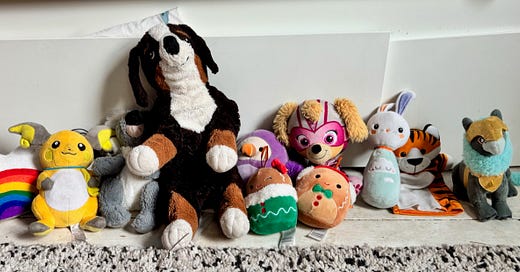



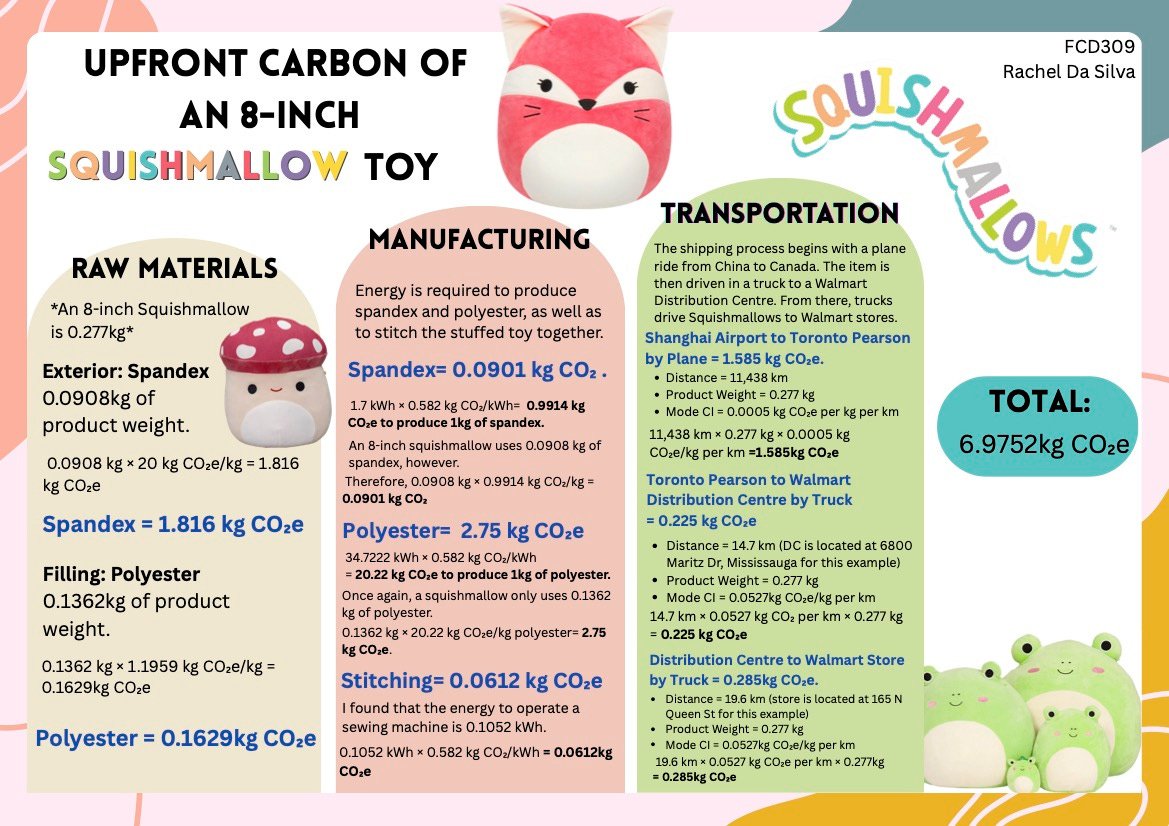
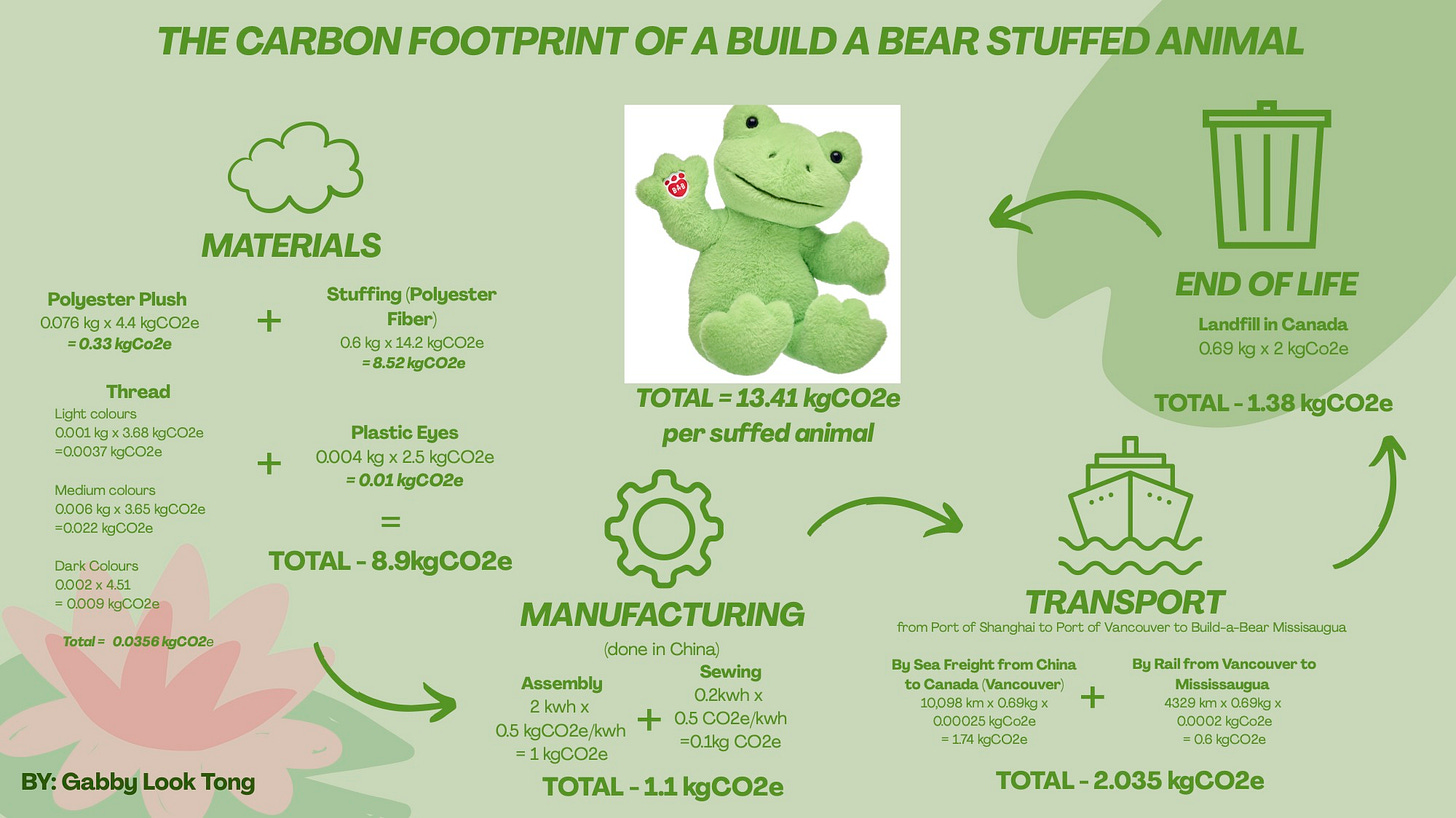
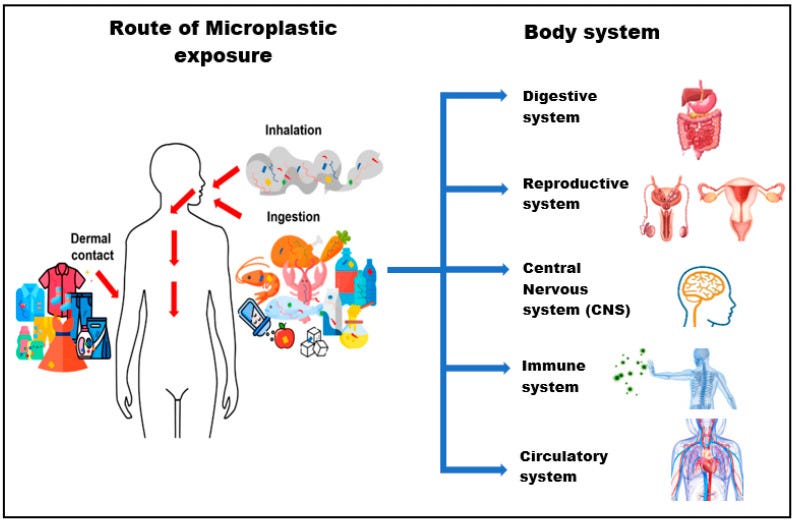
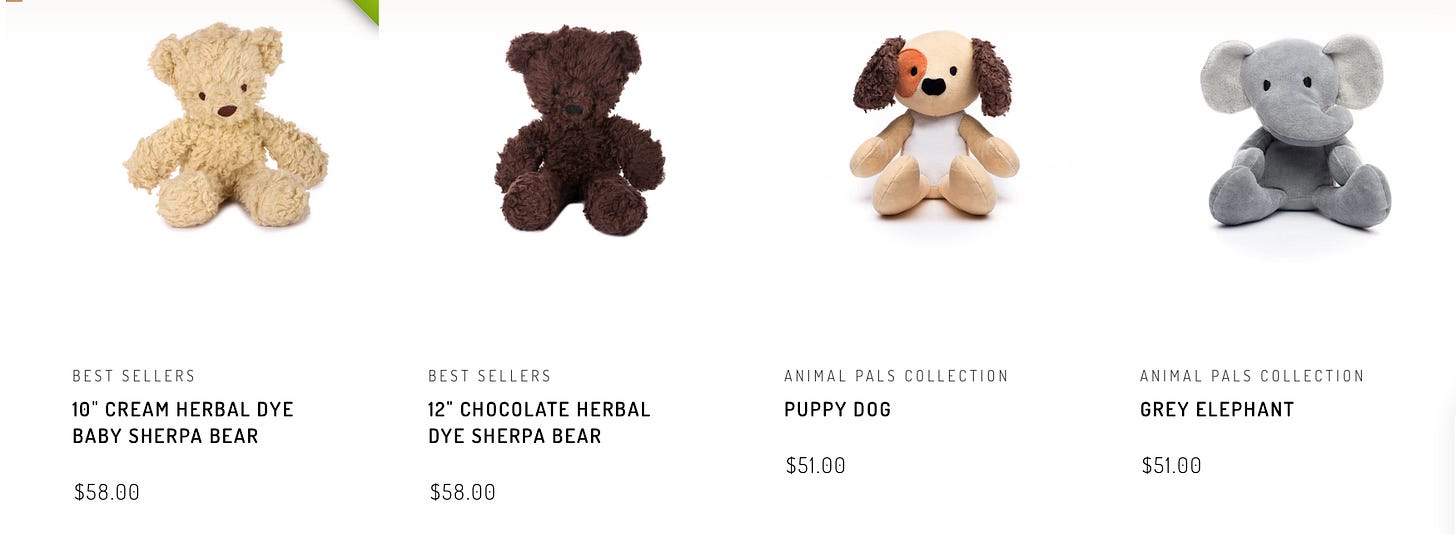
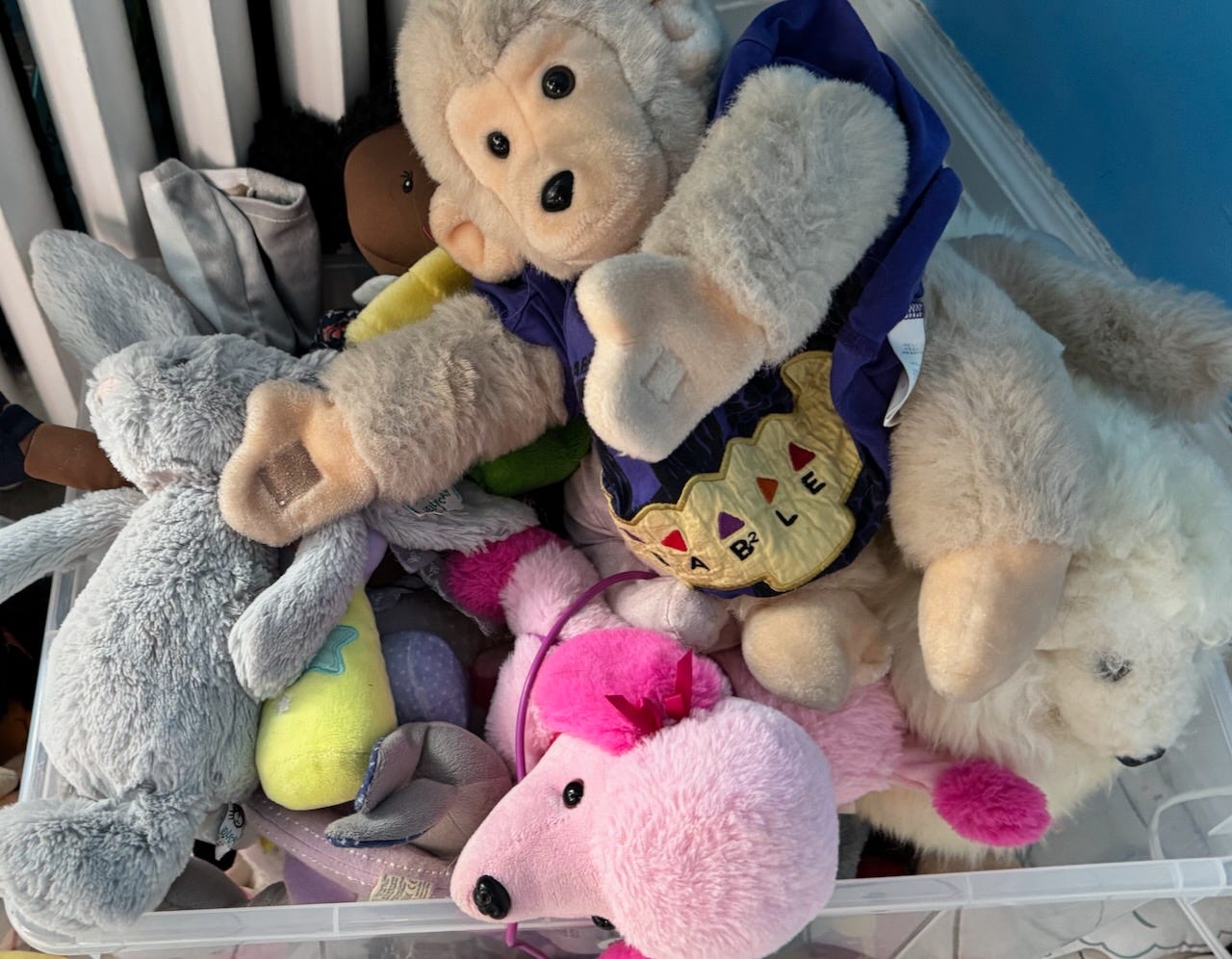
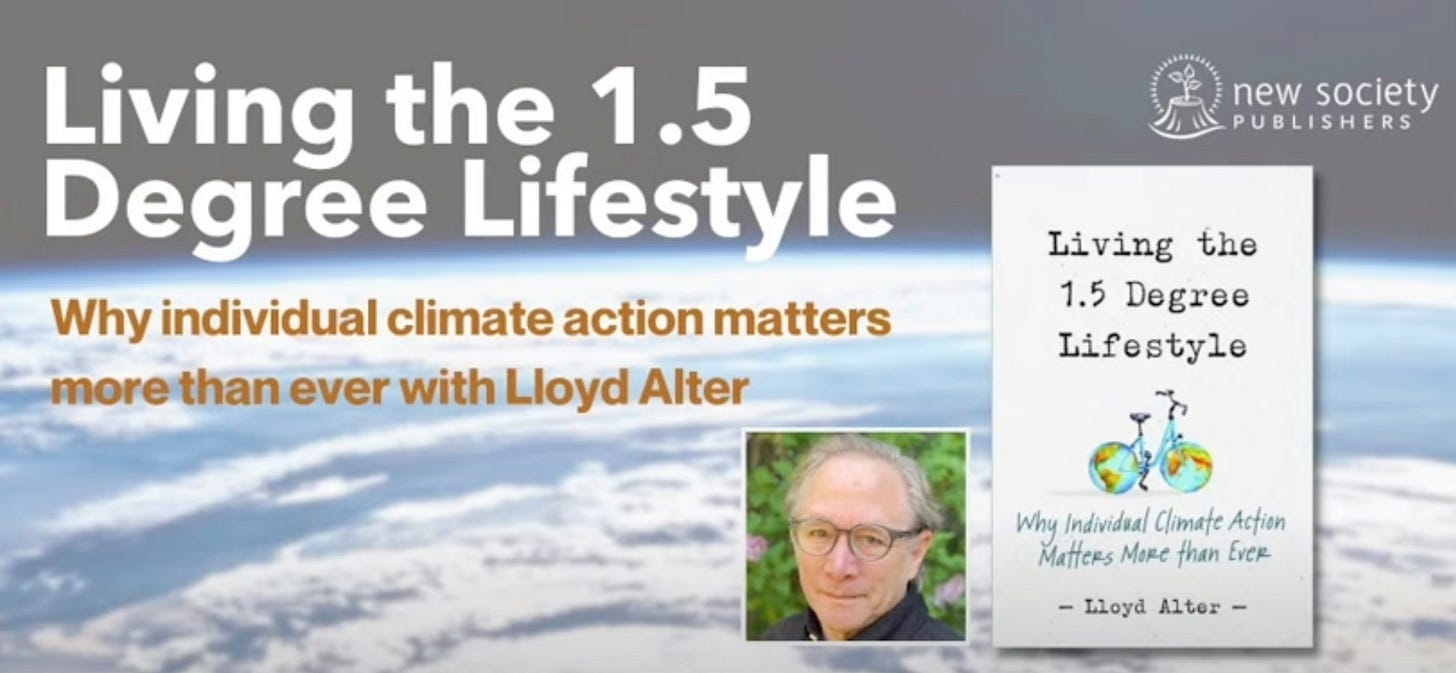
Another way to look at it is going back to this idea of just limiting our stuff and overall consumption. Children's toys have gotten so out of control, not to mention that extreme consumption means that many children, especially in the Western world, just have far too many toys.
Going back to the idea of handmade toys, where a child only has a select few vs the syndrome of owning every single plastic toy from Target...
At least with having a select few, better choices could be made because each one purchased would be more intentional and carefully considered.
You write a book on living the 1.5 lifestyle and then you are going to personally deliver it to London and Glasgow. Wow!!!!!!